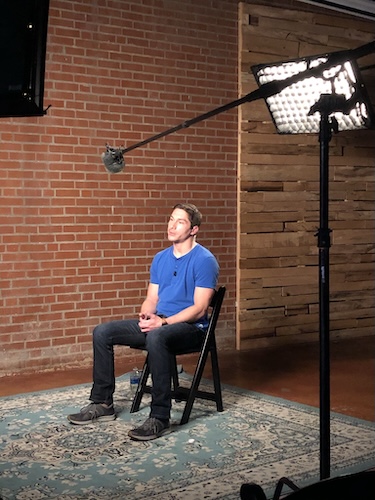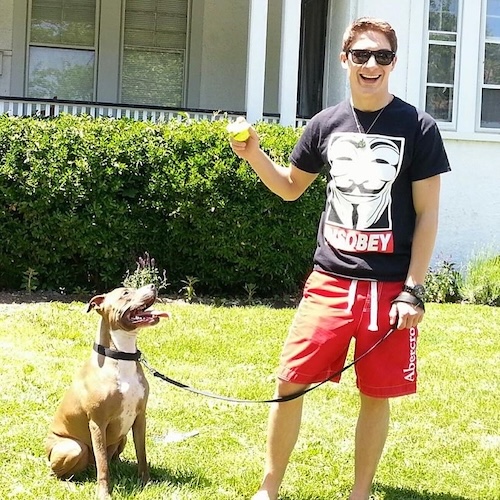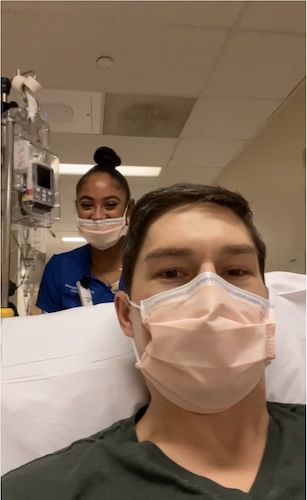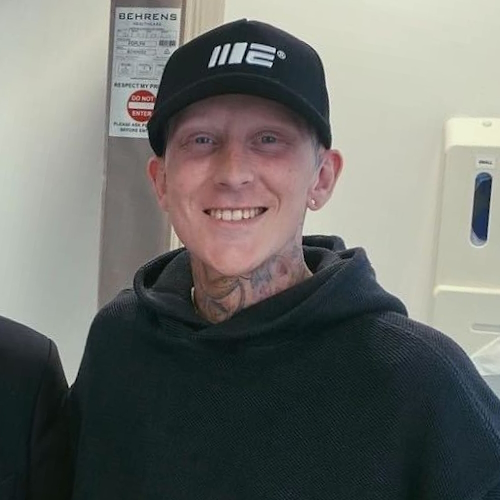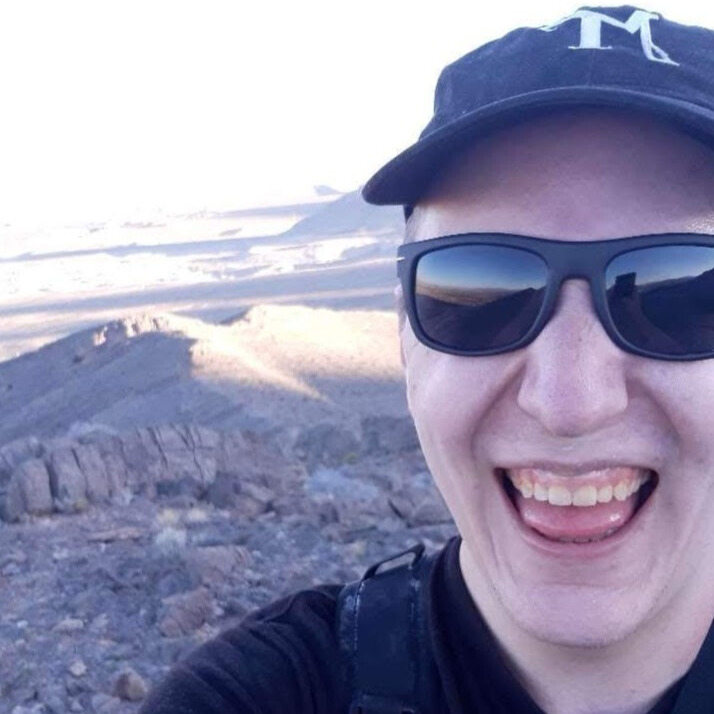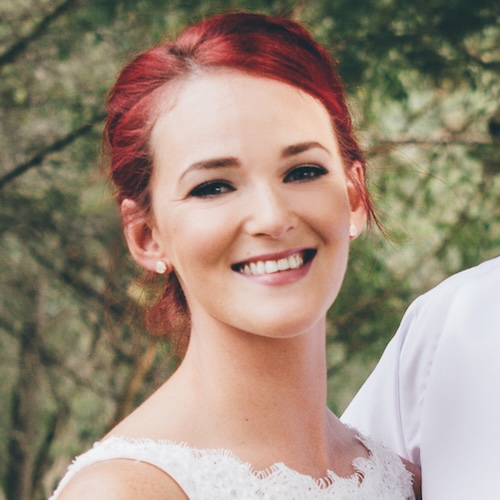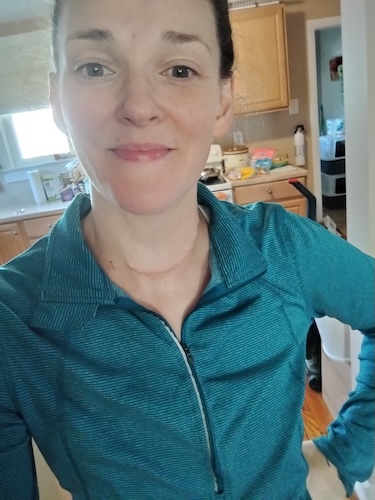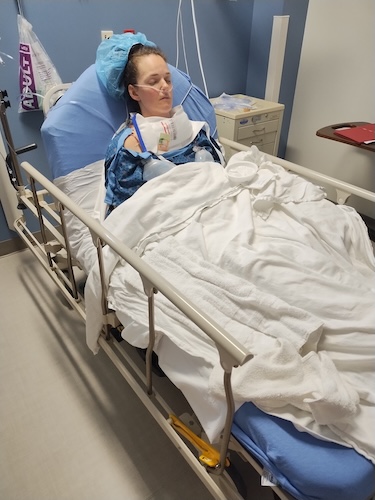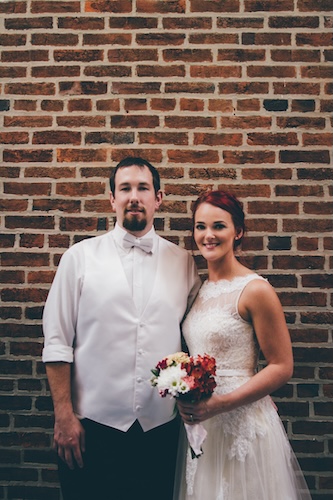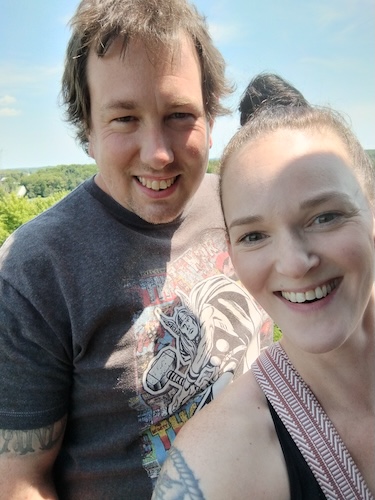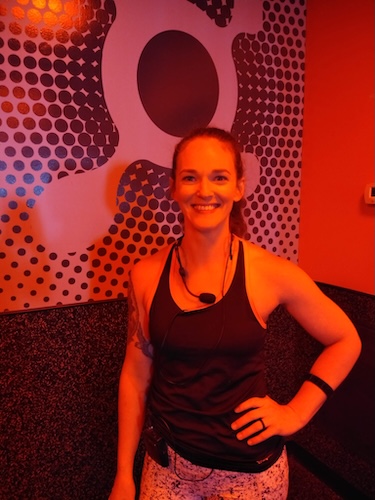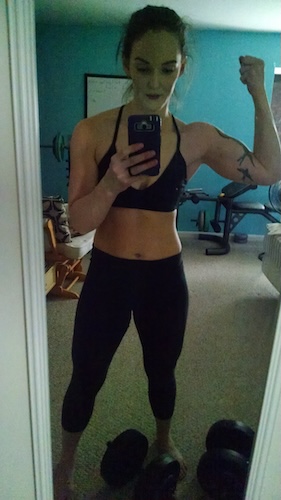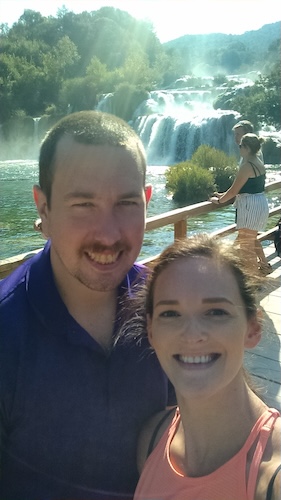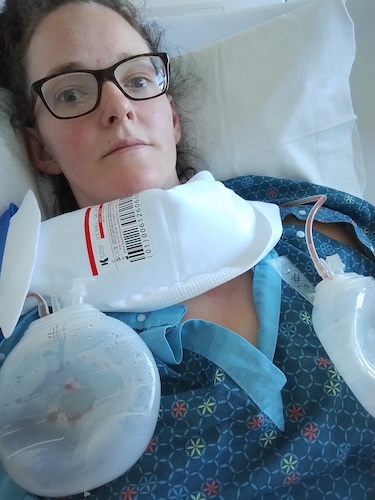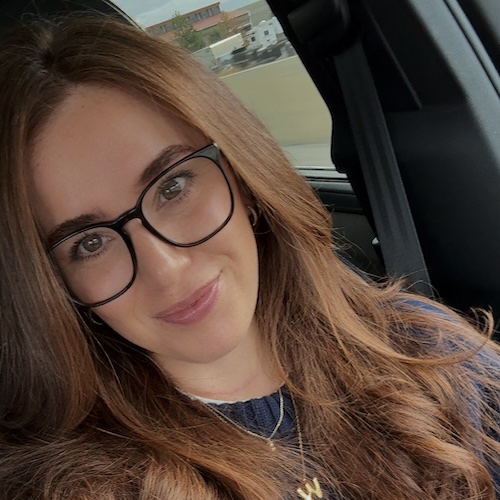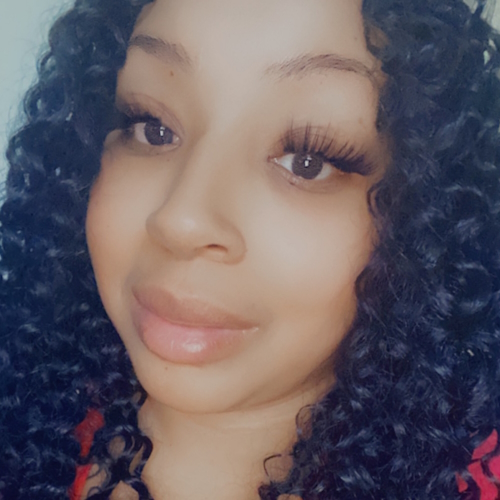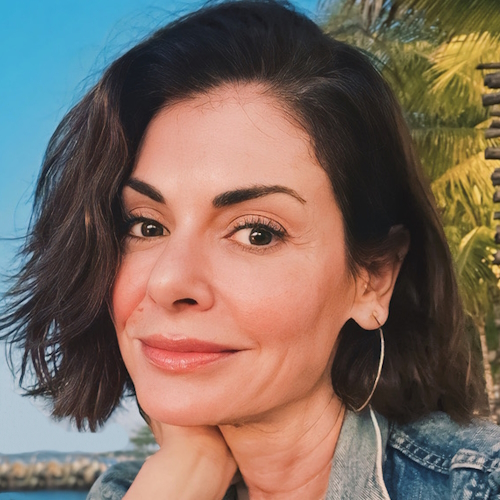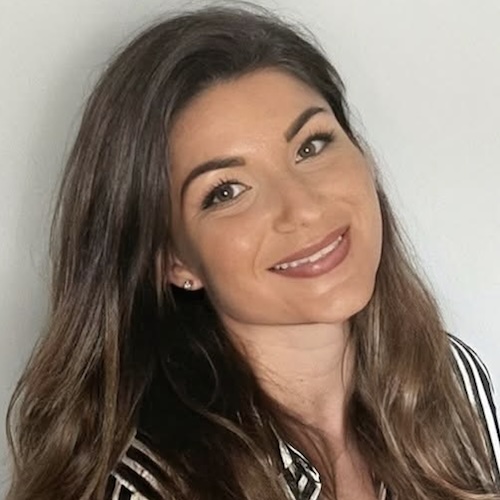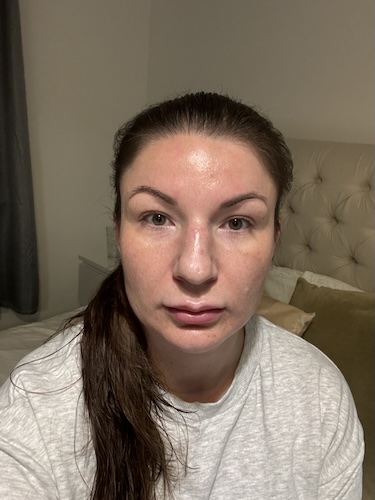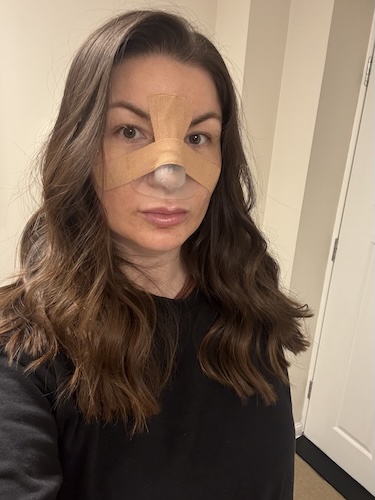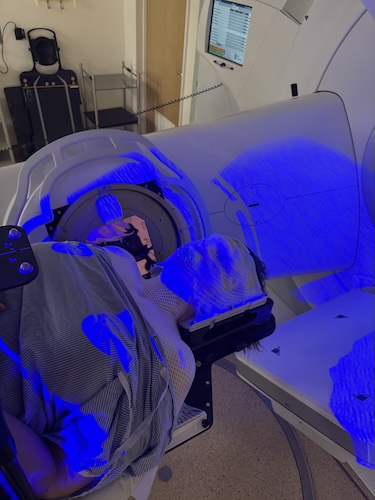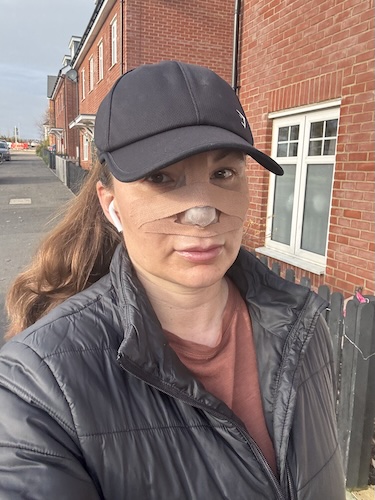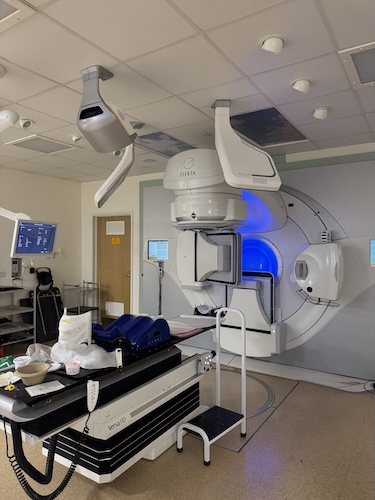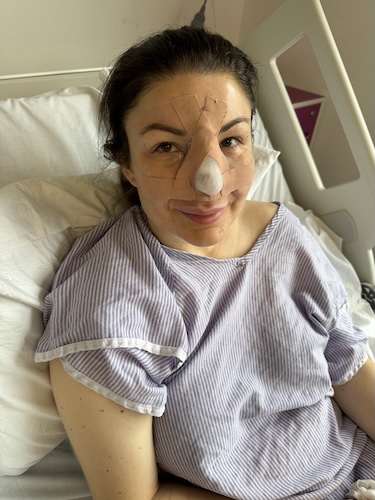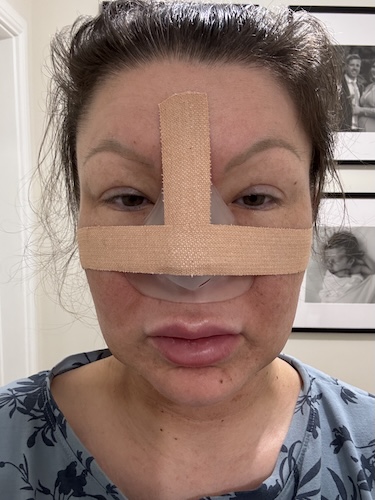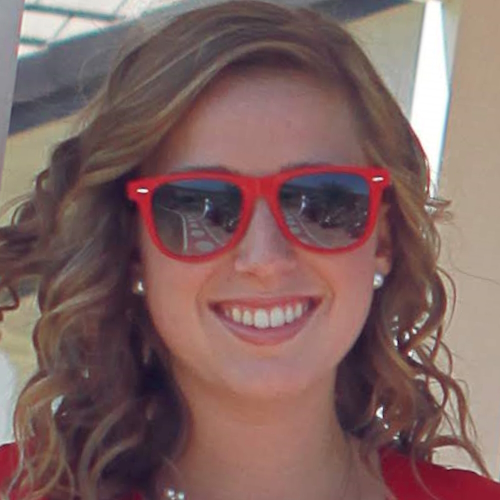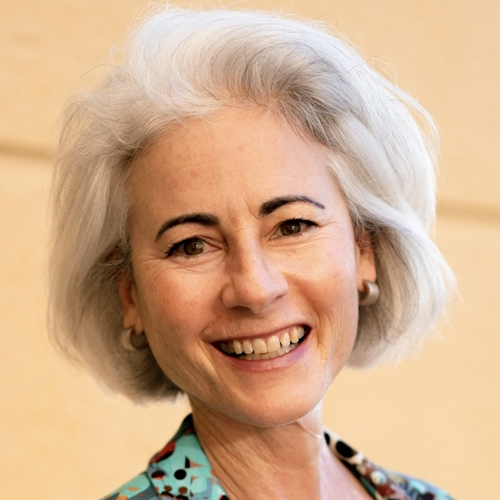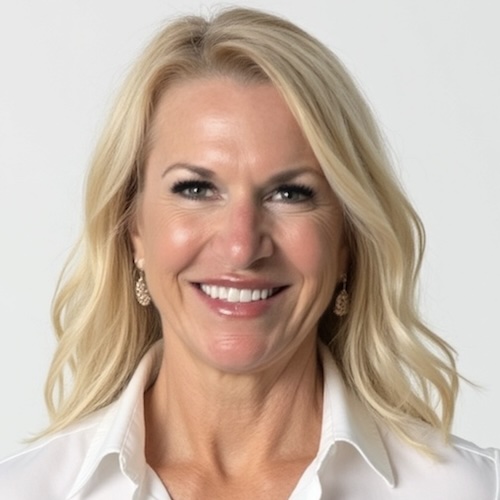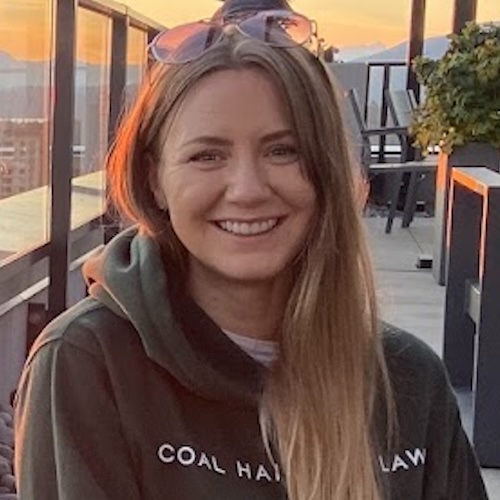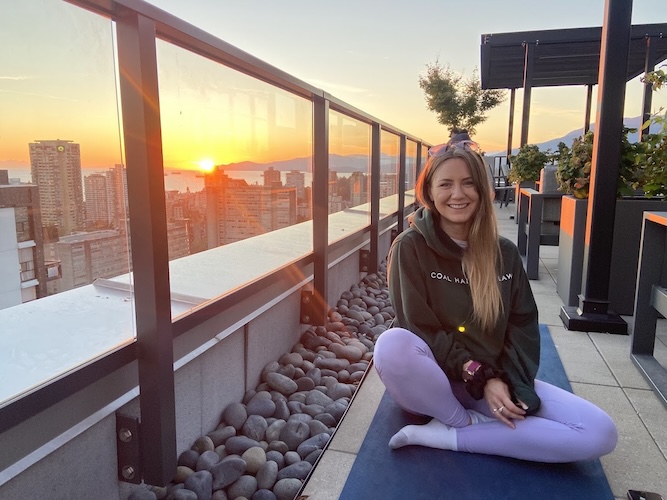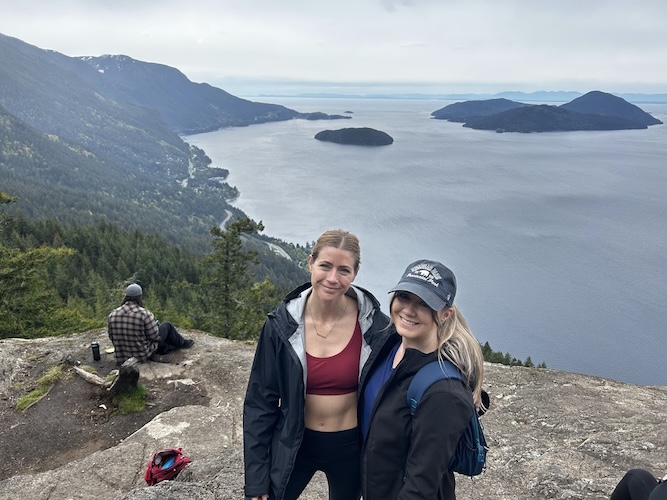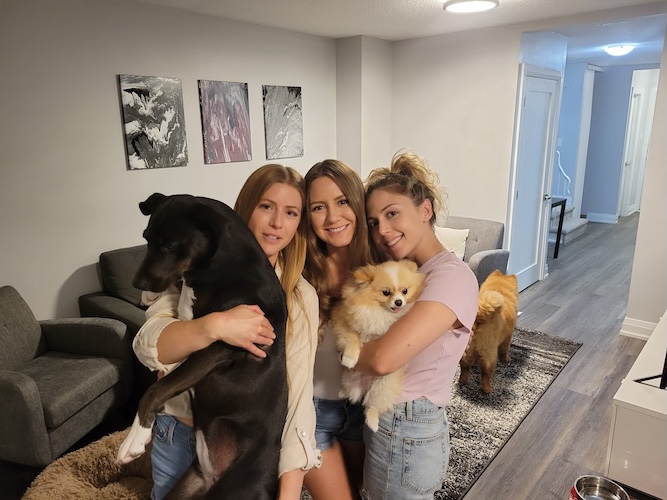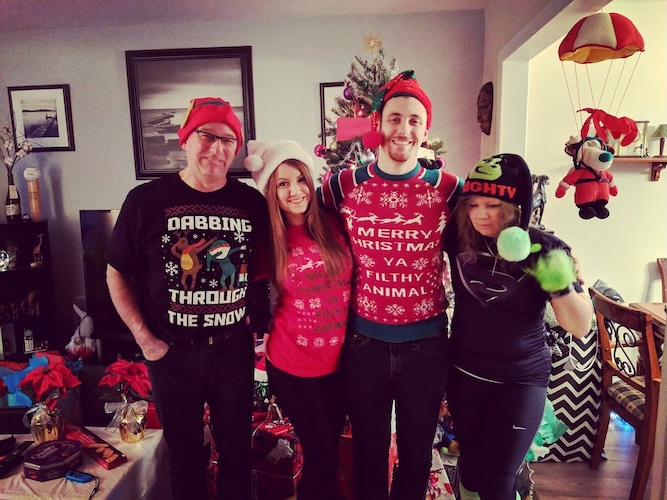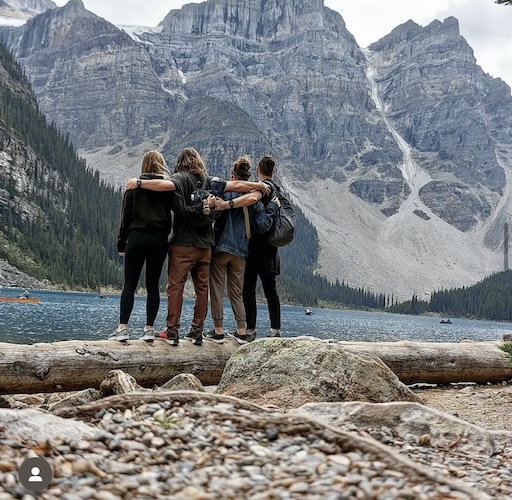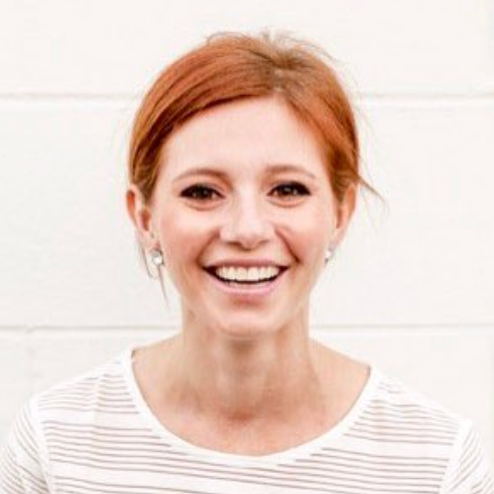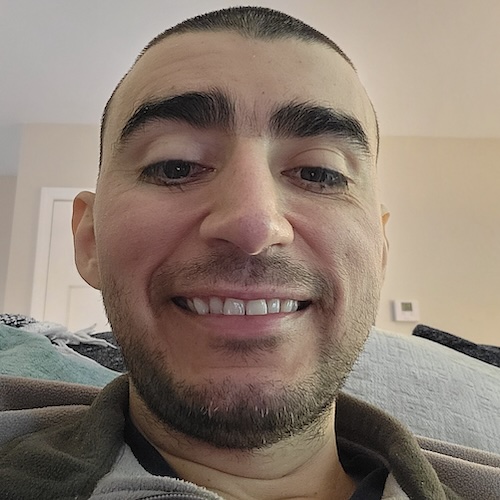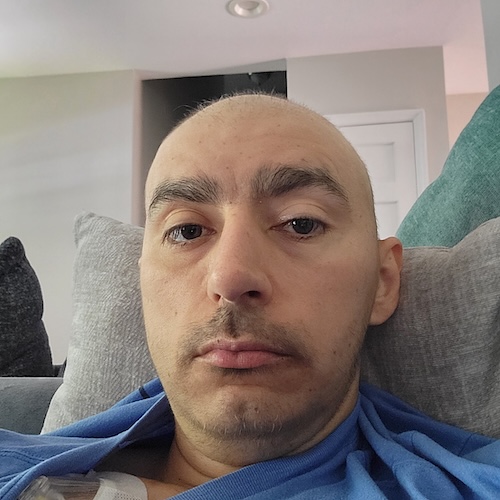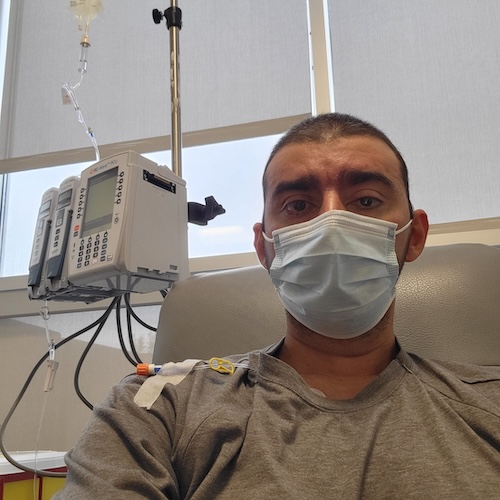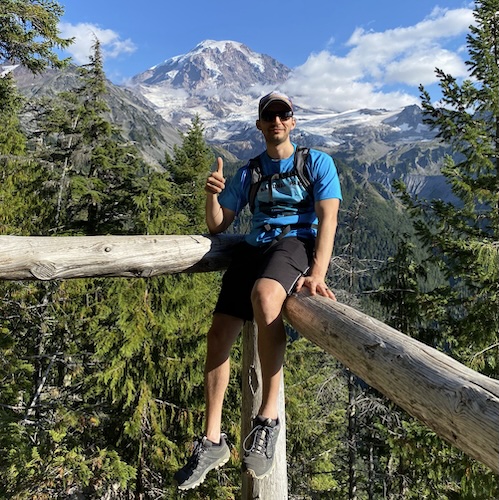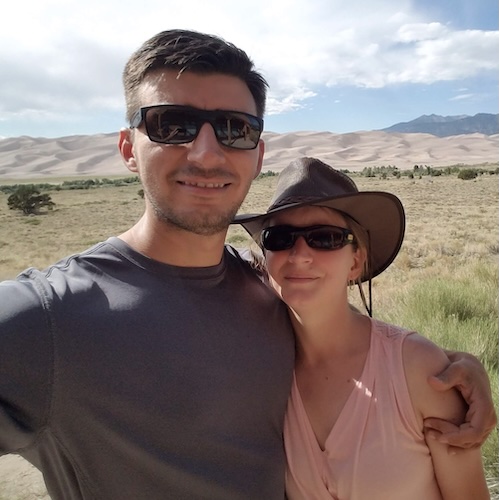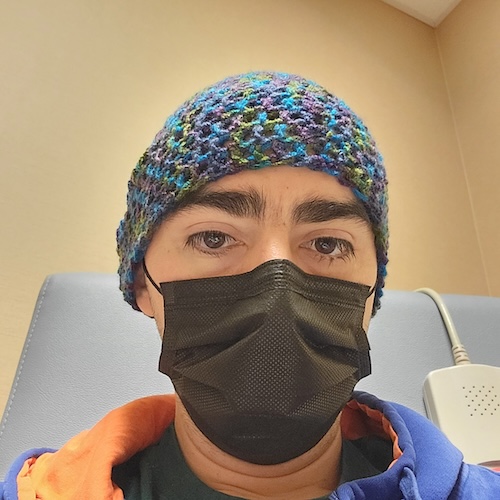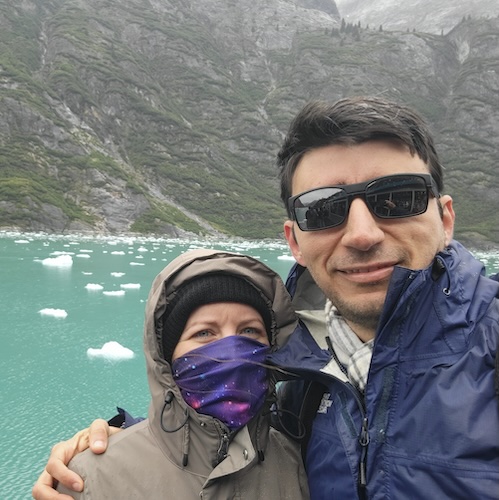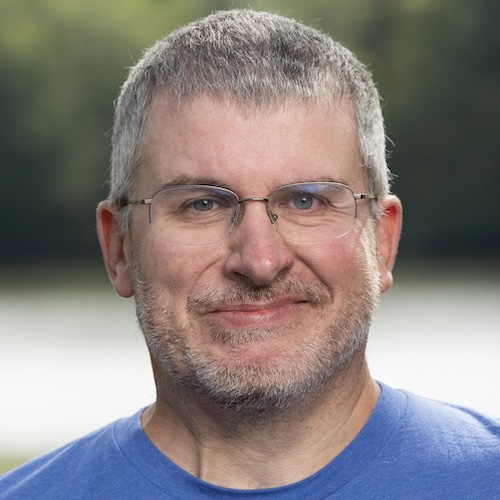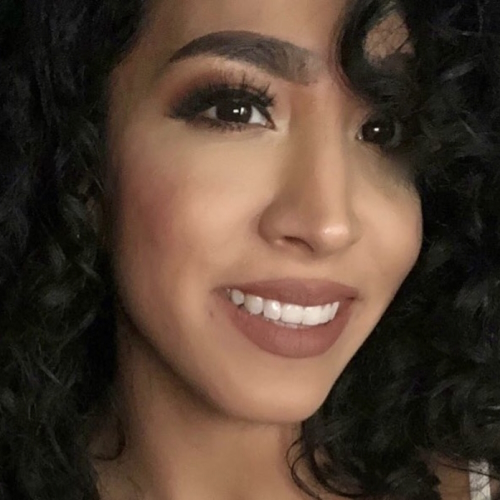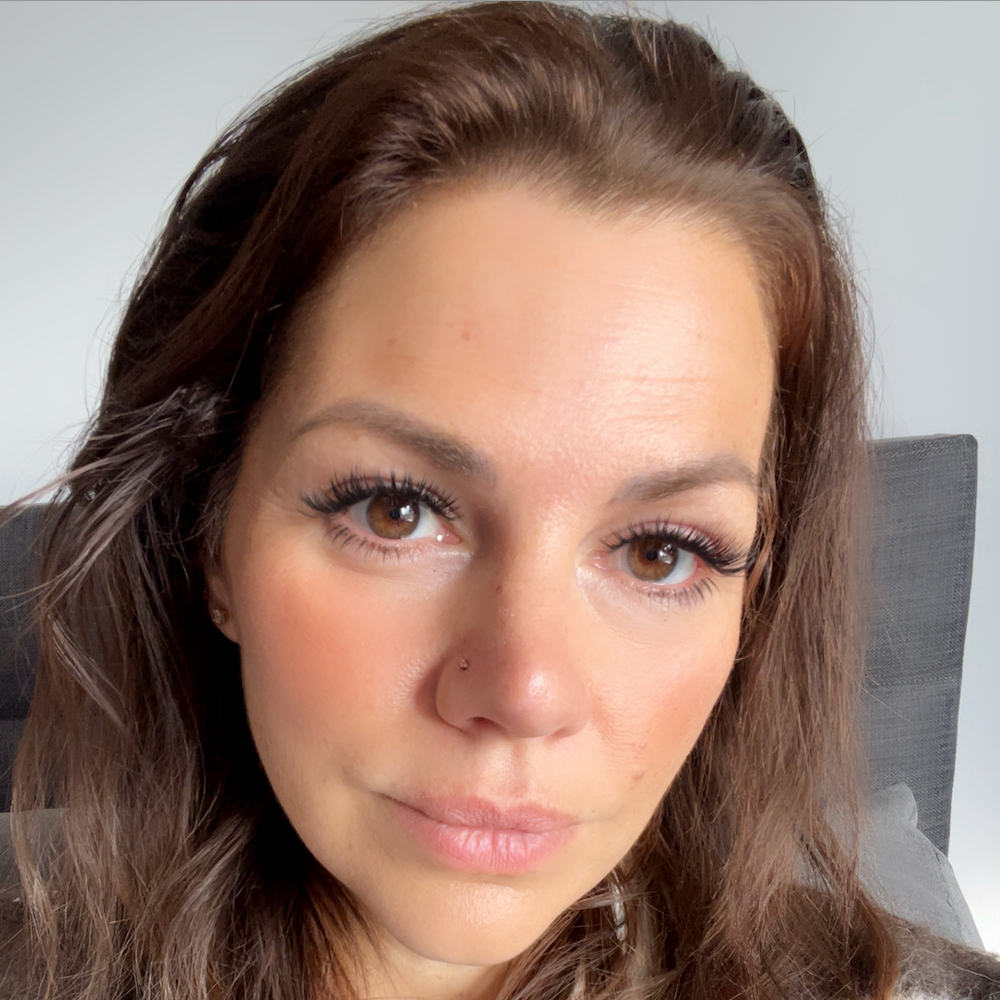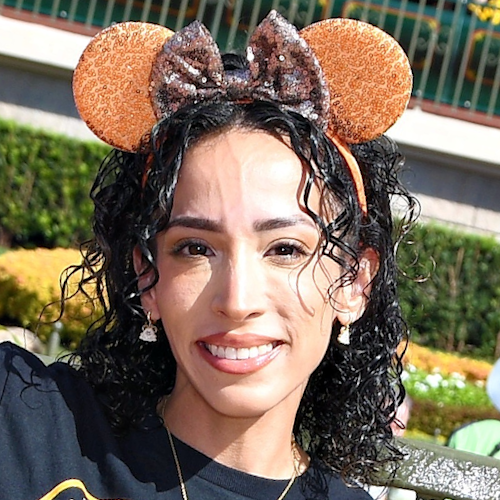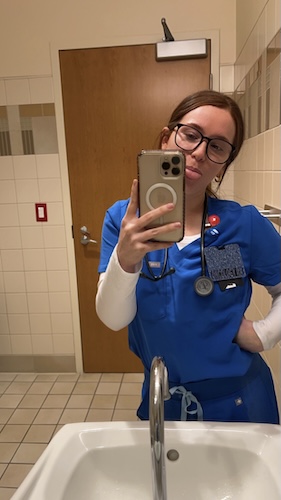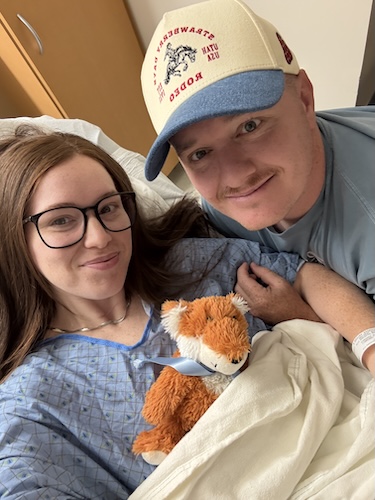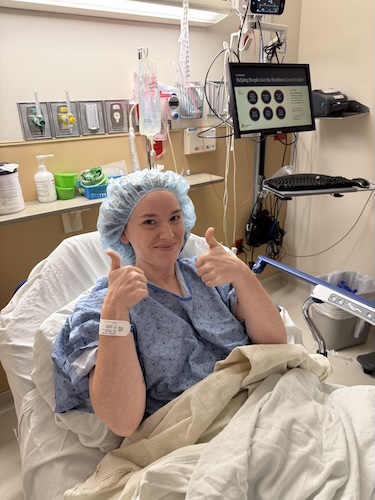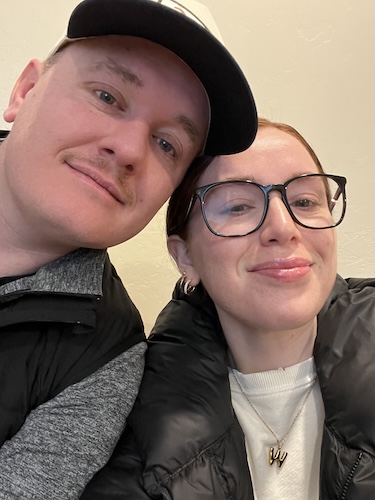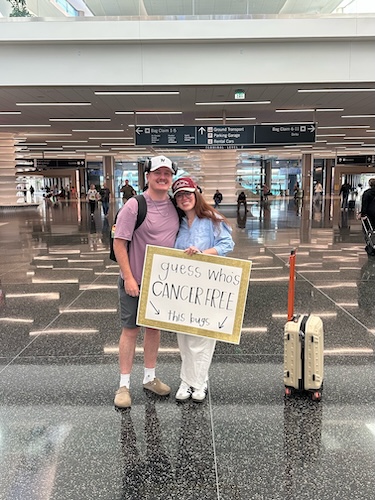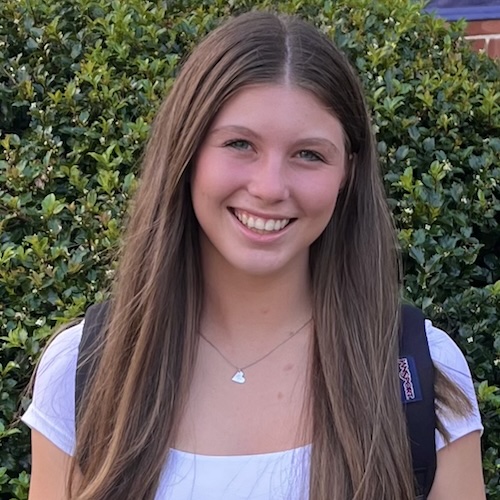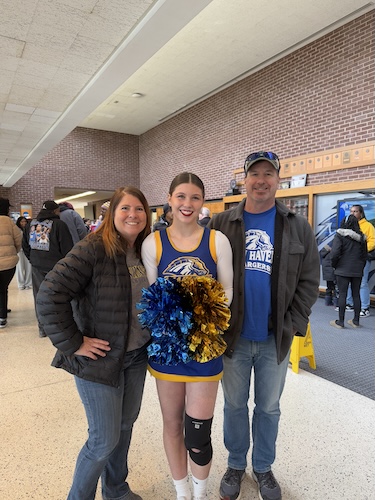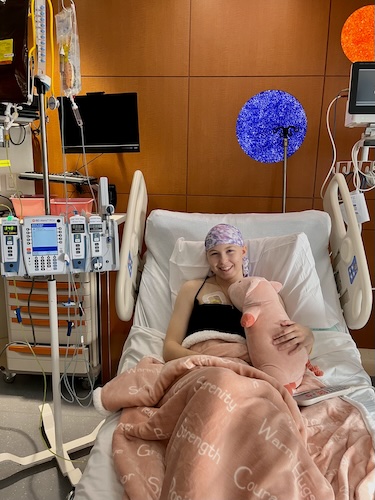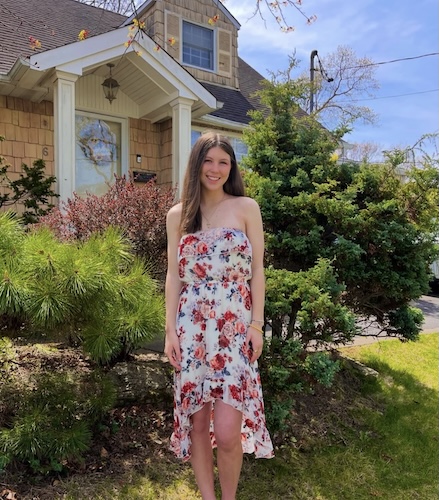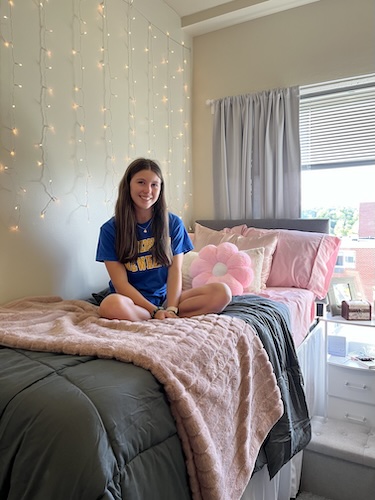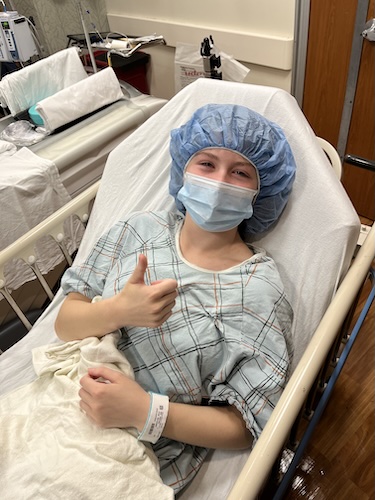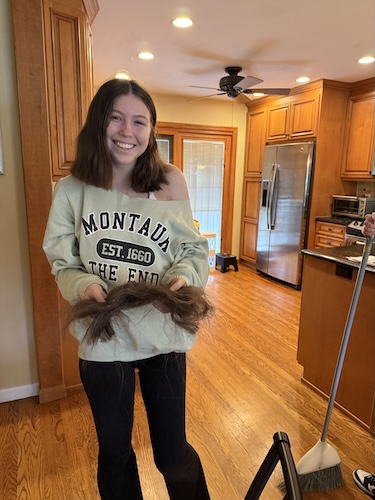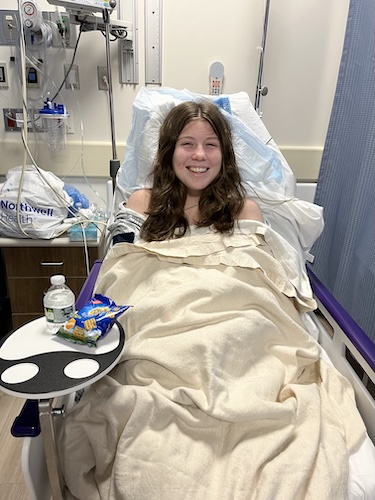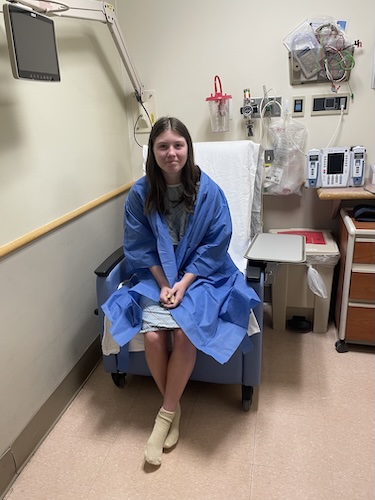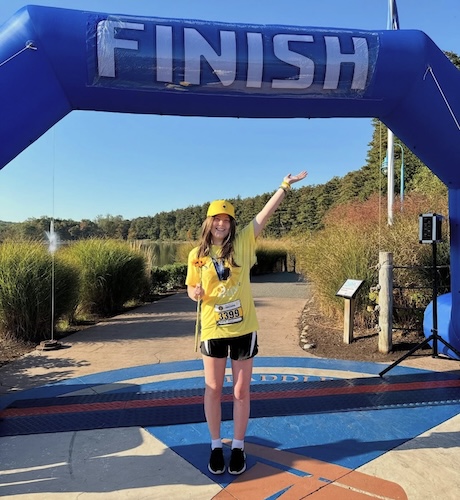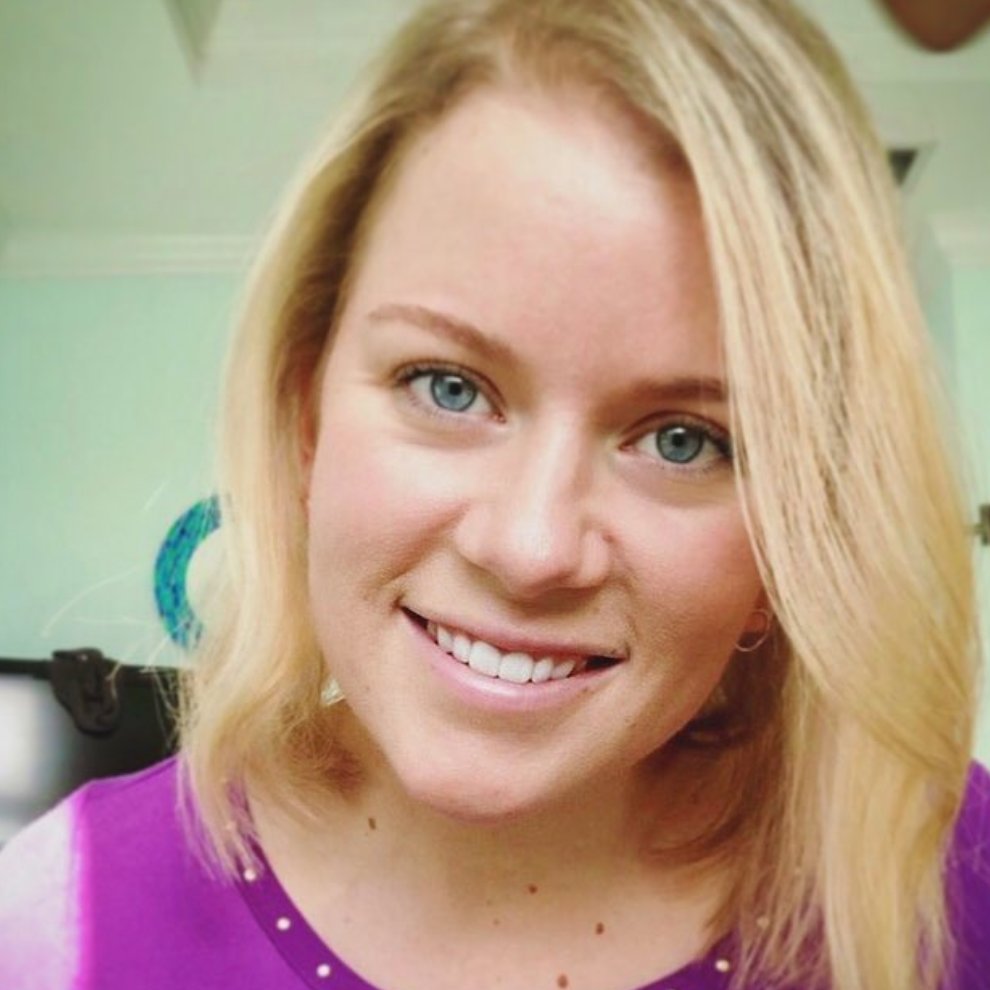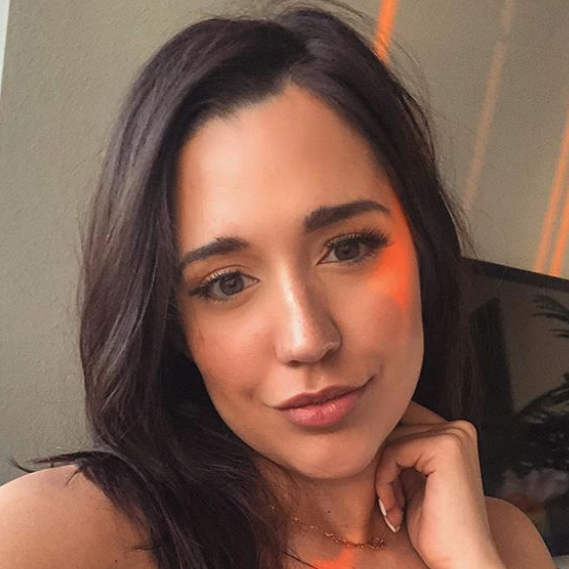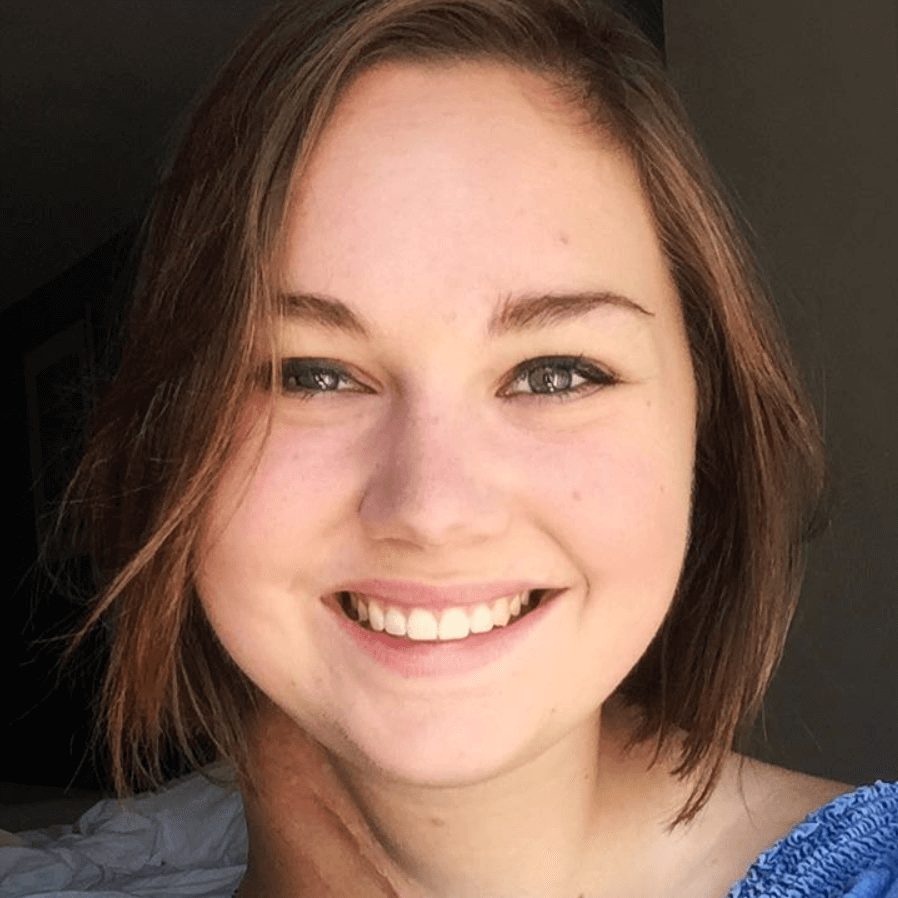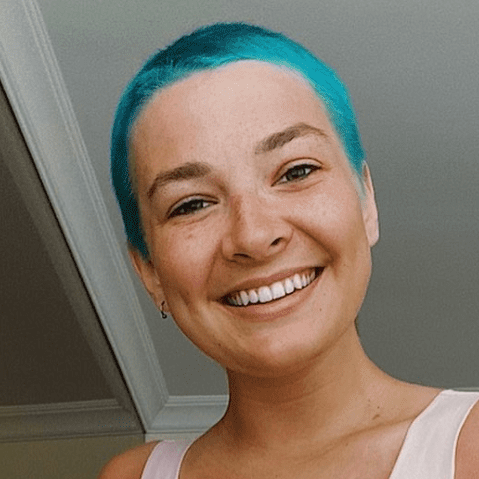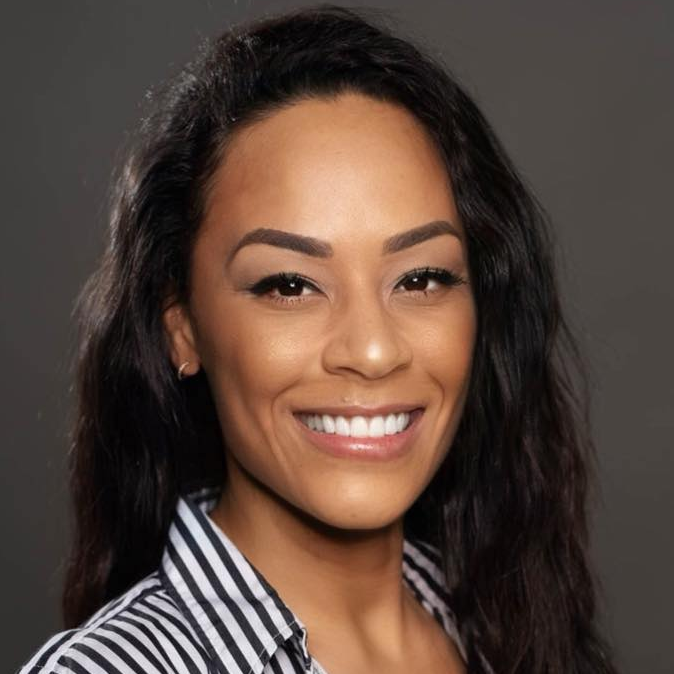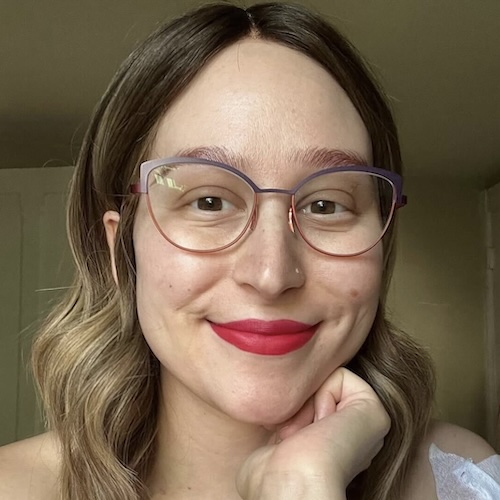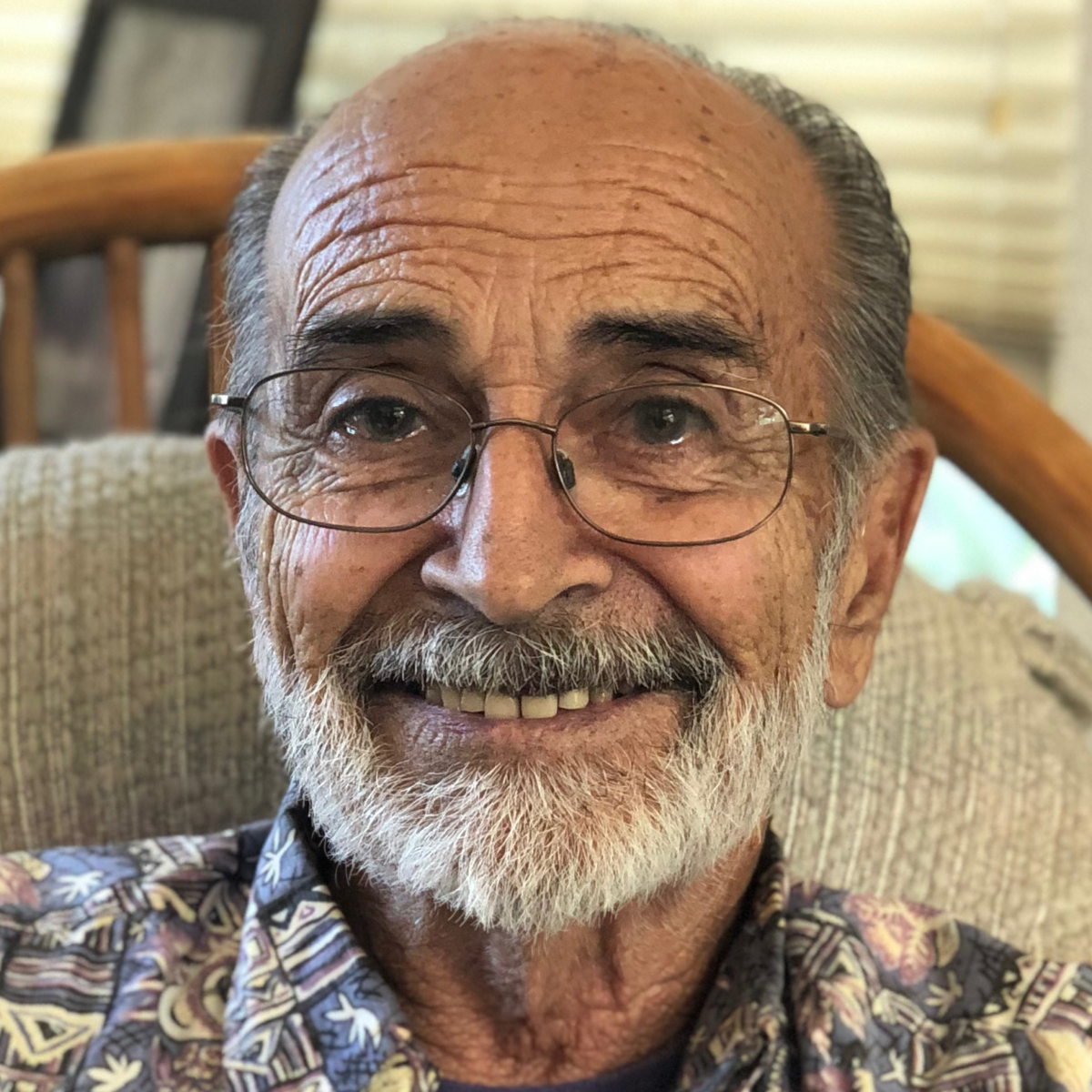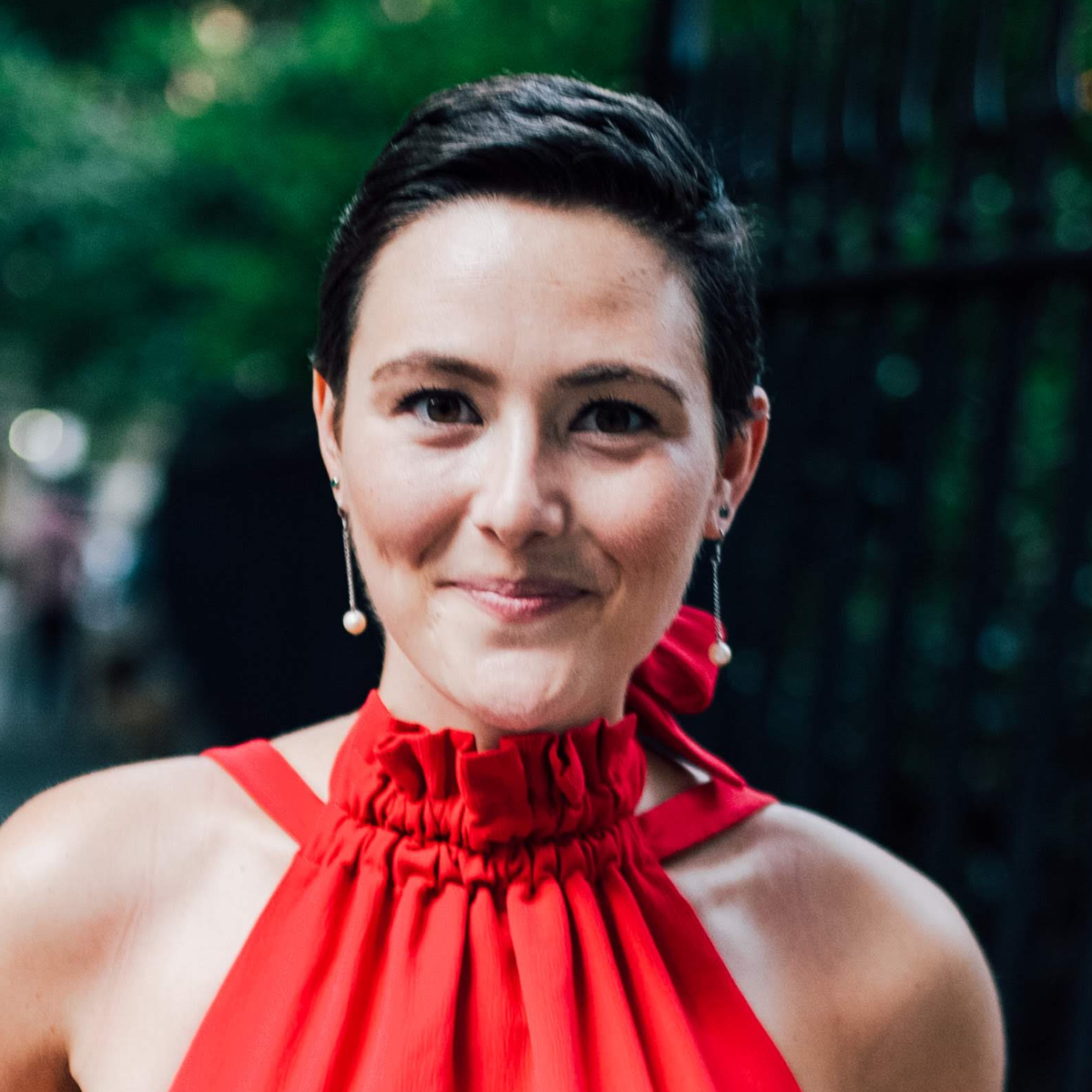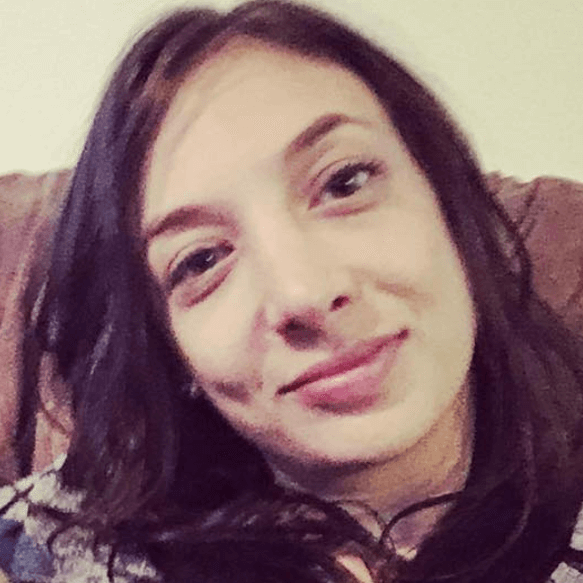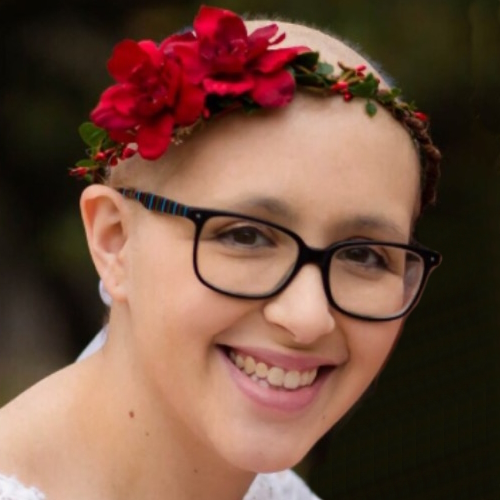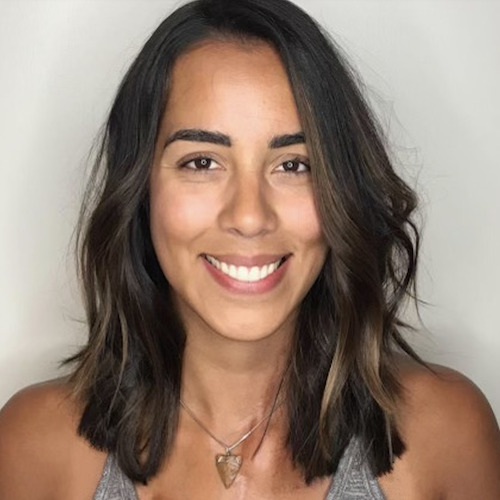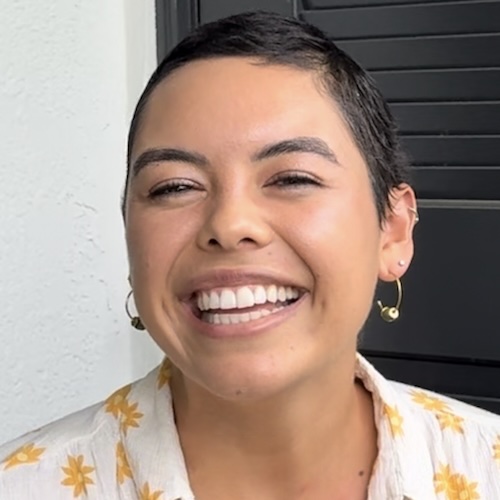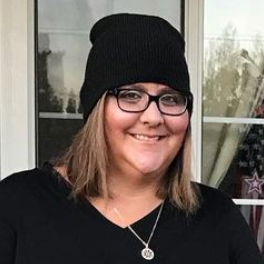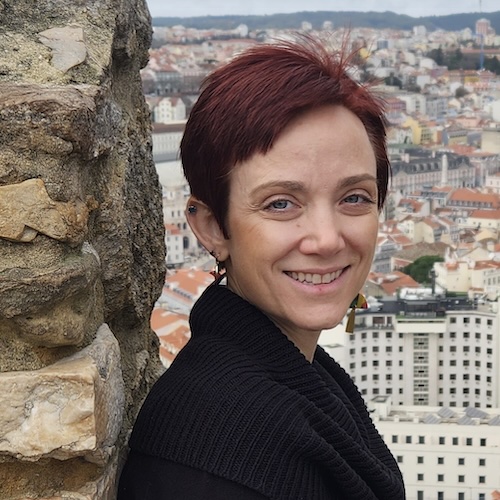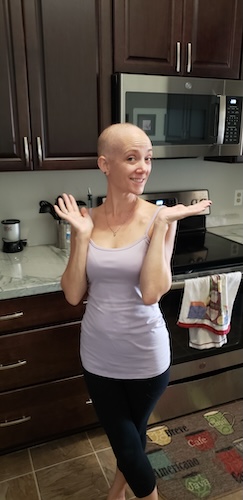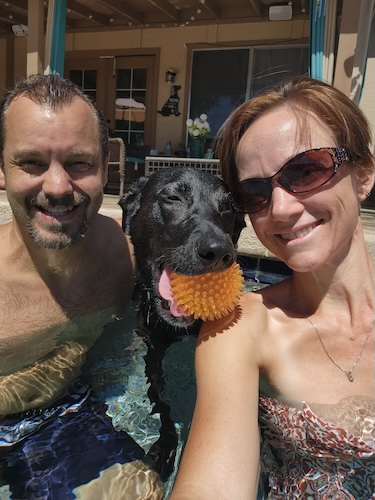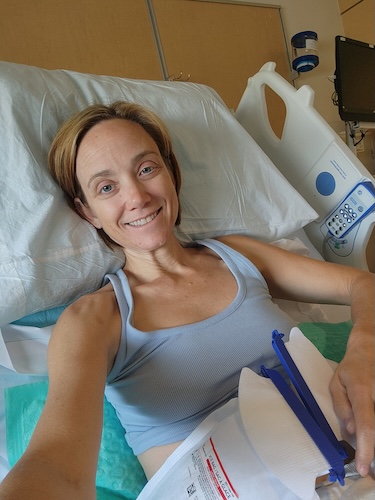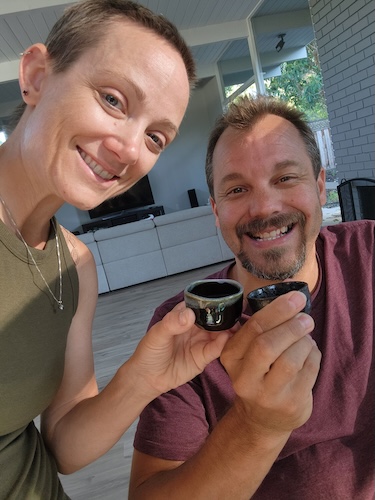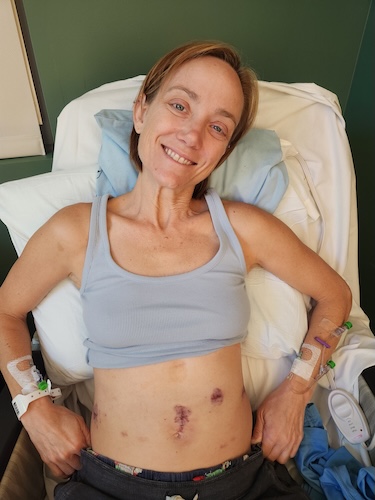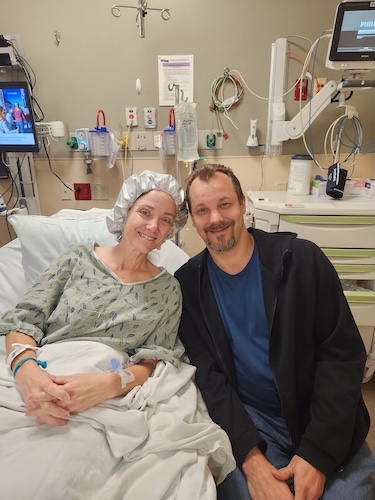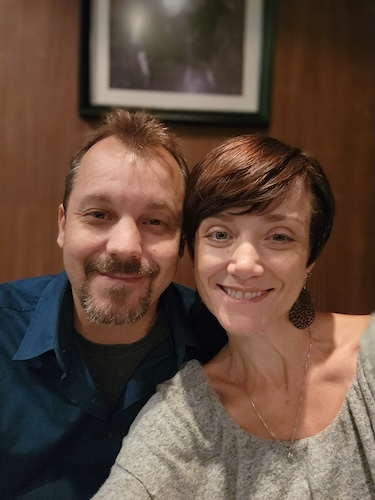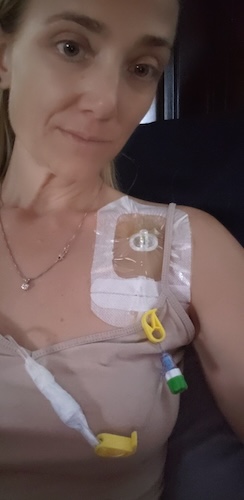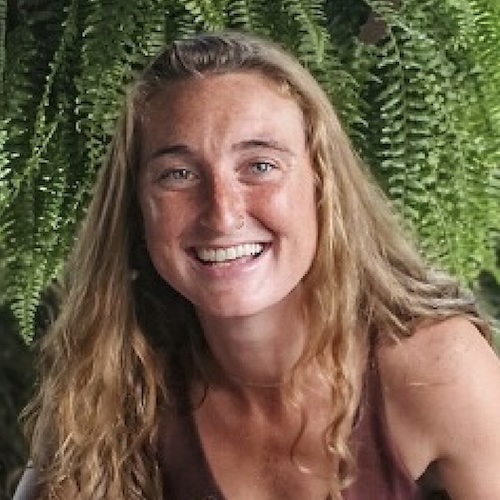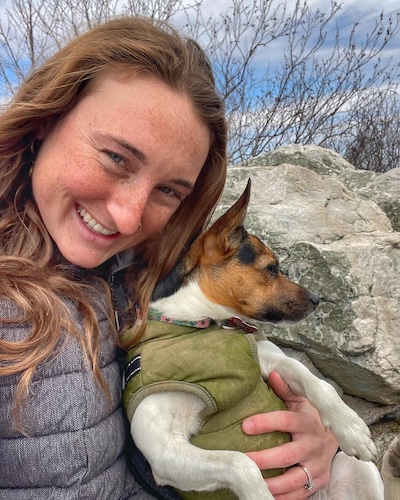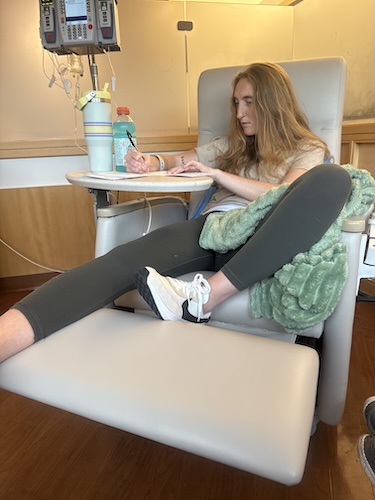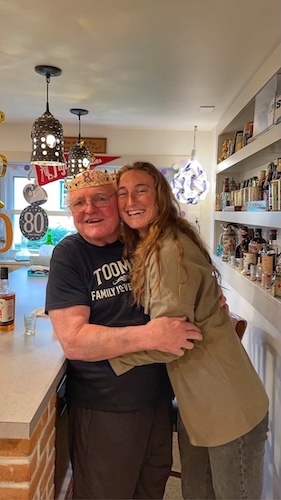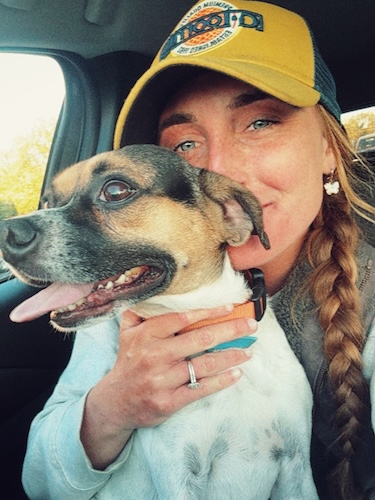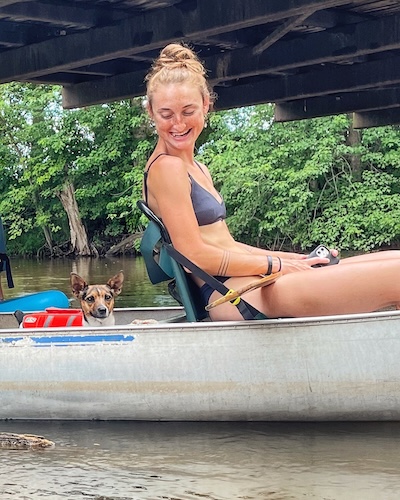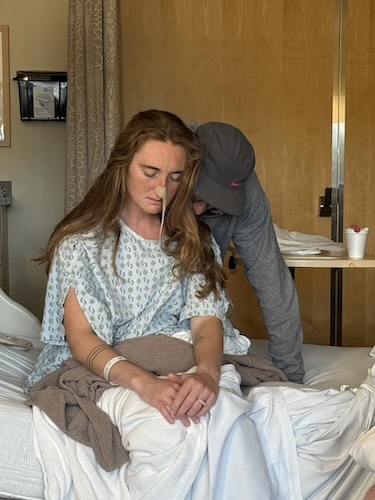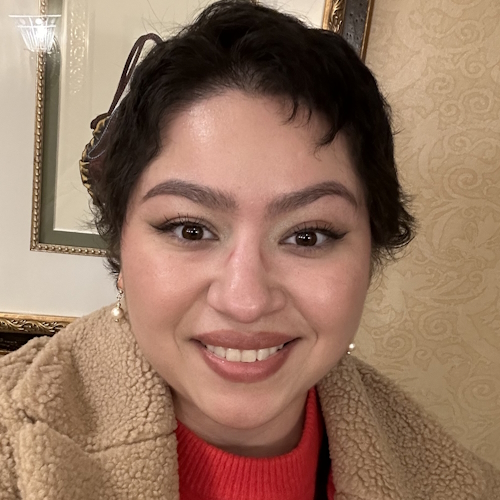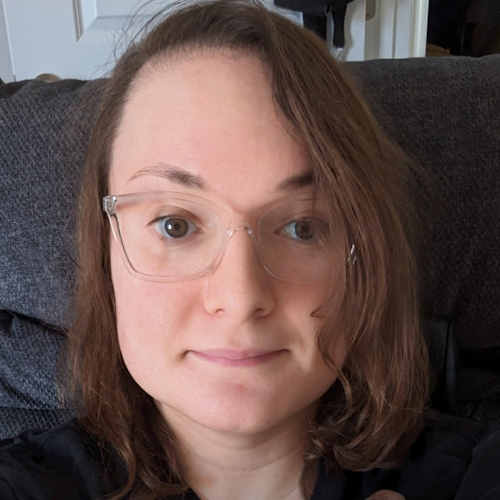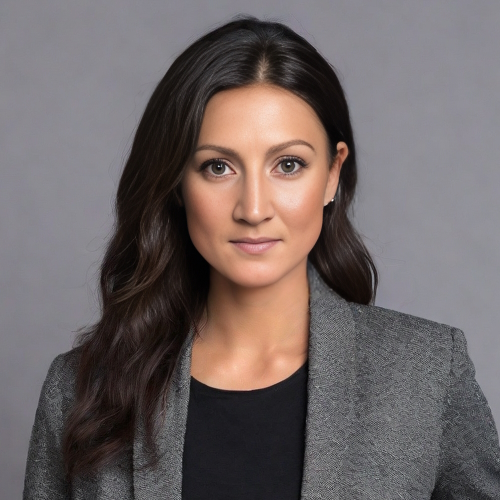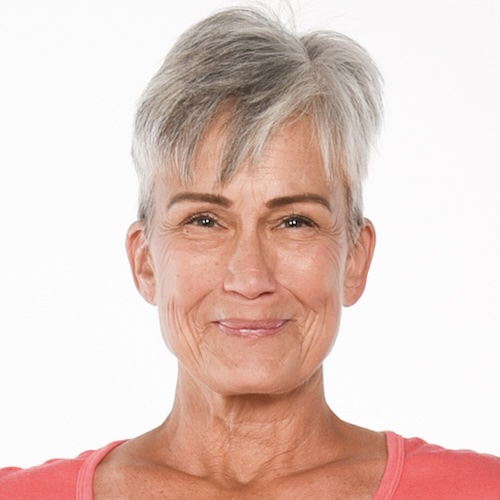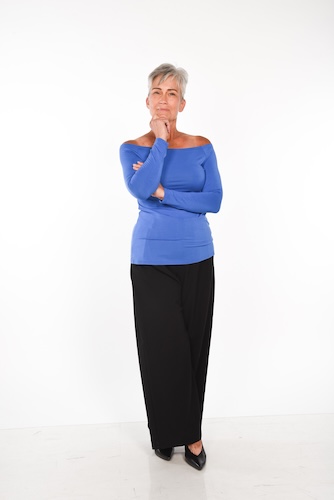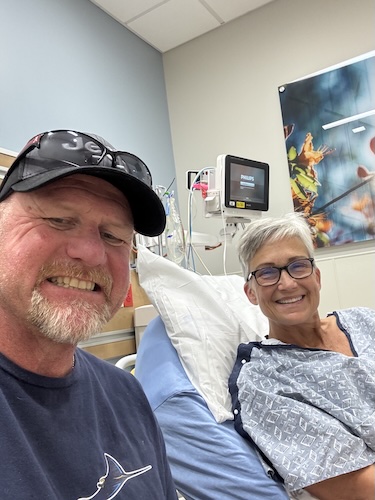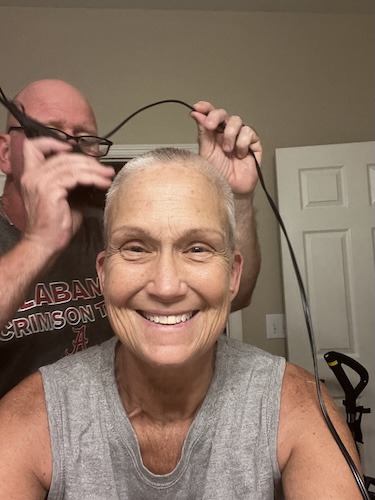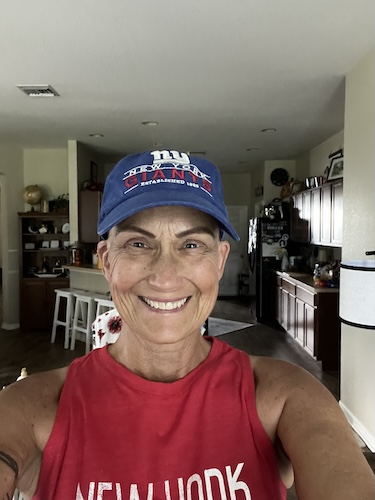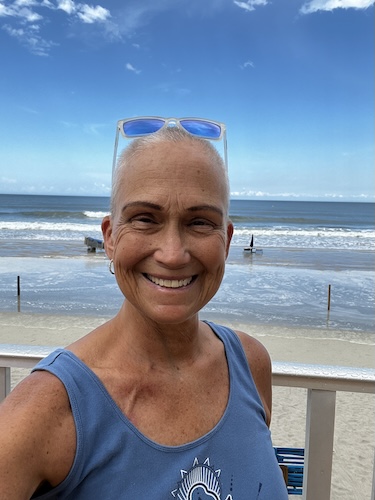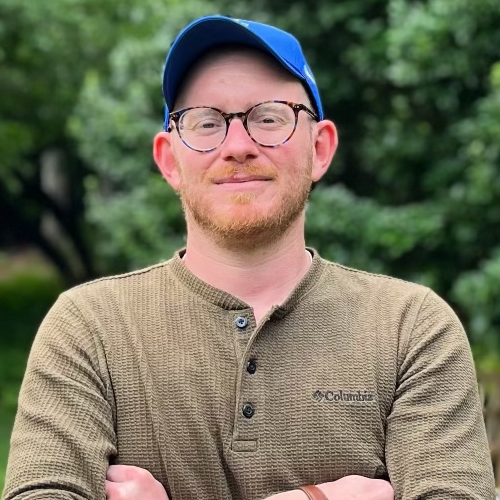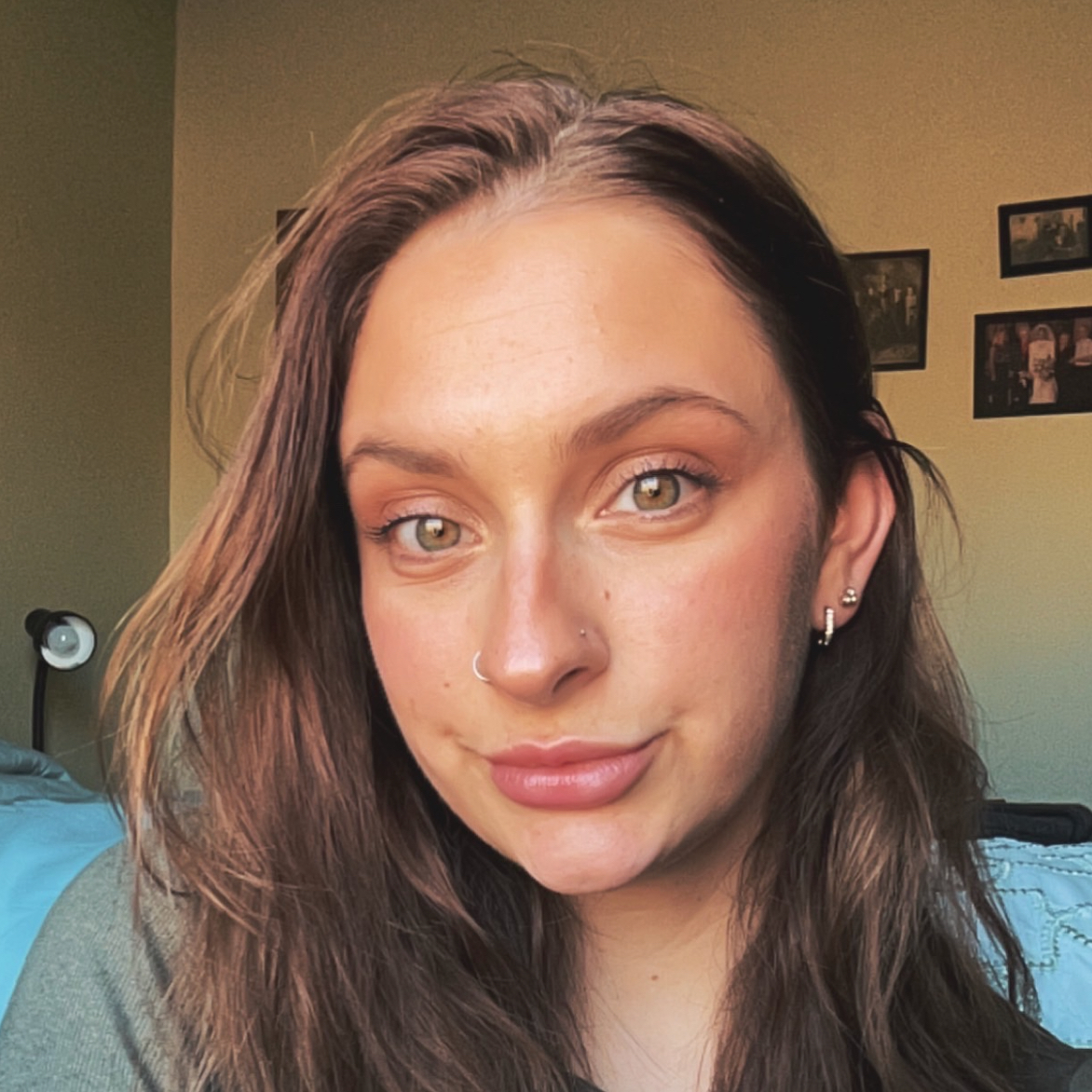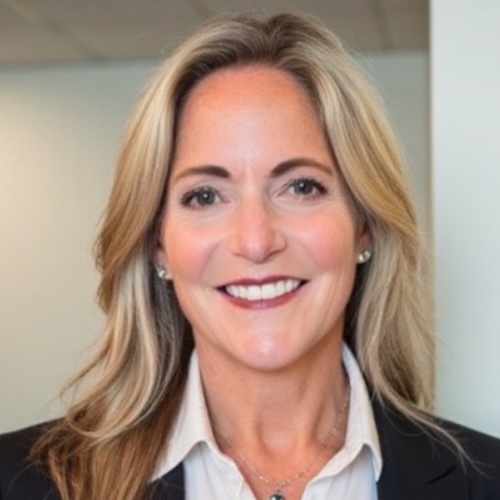Andrew Ryan Finds New Meaning After Stage 4 Testicular Cancer
Andrew Ryan is a 41-year-old digital marketing expert who splits his time between meaningful work, family, and faith. Originally from New Jersey and now living in Tennessee, he is the proud uncle who shows up for nieces, nephews, and cousins’ weddings, and the kind of person who loves to stay active, read, play poker, and keep moving forward. In December 2022, that forward motion was interrupted when persistent leg pain and severe discomfort sent him to the ER, where he was diagnosed with stage 4 testicular cancer. He says, “That was not what I was expecting, and it changed everything.”
What followed was a fight for his life that tested everything he believed about himself, his health, and his future. Today, Andrew is cancer free, 22 months and counting, and has poured his experience into a book and speaking engagements so he can share what he has lived through with others facing cancer.
Interviewed by: Carly Knowlton
Edited by: Chris Sanchez
His immediate instinct was to fight. Andrew Ryan found himself focused on survival, not probabilities. He returned to New Jersey to seek the best cancer care. Surgery quickly removed the affected testicle, and four rounds of chemotherapy followed. Side effects were severe and wearying, and when a post-chemo scan showed testicular cancer regrowth, his team escalated to high-dose chemotherapy and a stem cell transplant in Manhattan.
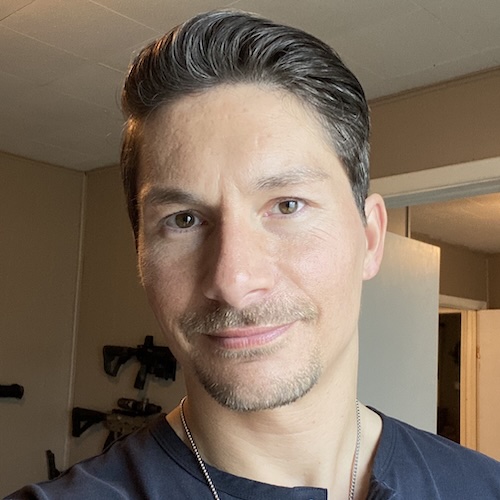
Multiple surgeries, including a major abdominal operation and partial lung resection, tested Andrew Ryan’s resolve. Long hospital stays, physical debilitation, and witnessing the pain of other patients left deep marks.
Andrew Ryan credits his family and faith with sustaining him through this stage 4 testicular cancer experience. The nervous energy and existential fears from earlier traumas reappeared, but faith provided grounding and hope. Celebrating scan results, ringing the bell, and returning to life’s milestones felt triumphant but bittersweet; reminders of his survival and those lost.
As a survivor, post-cancer life means asking, “How do I make this worth it?” For Andrew Ryan, that means sharing his story, supporting others, and living with authenticity. He urges fellow patients to treat it as a challenge and fight to overcome it, to not lose their authenticity, and to know that no matter what happens, life goes on.
Watch Andrew Ryan’s video above, and read through his edited interview transcript below. You’ll gain insight into key aspects of his story, including:
- The need to be proactive with any unexplained or persistent pain. Early detection matters, even in young and otherwise healthy people
- How cancer’s impact lingers emotionally and physically, even for those declared cancer-free
- Facing the possibility of mortality can deepen meaning, motivation, and connection to others
- How support from family and spirituality can be vital during cancer treatment and recovery
- Andrew Ryan’s transformation: From disbelief and anger, through pain and despair, to advocacy, resilience, and helping others
- Name: Andrew Ryan P.
- Diagnosis:
- Testicular Cancer
- Staging:
- Stage 4 (Metastatic)
- Age at Diagnosis:
- 39
- Symptom:
- Severe leg pain
- Treatments:
- Surgeries: retroperineal lymph node dissection (RPLND), orchiectomy, lung resection
- Chemotherapy
- Stem cell transplant
This interview has been edited for clarity and length. This is not medical advice. Please consult with your healthcare provider to make informed treatment decisions.
The views and opinions expressed in this interview do not necessarily reflect those of The Patient Story.
- My name is Andrew Ryan
- My first symptoms: the early warning signs I missed
- My immediate emotional response and entering 'fight mode'
- Shock, anger, and telling my family
- I went back home to New Jersey
- Surgical removal and four rounds of outpatient chemotherapy
- The cancer started to grow again; I got further treatment
- Being NED, ringing the bell, and survivorship
- Family, faith, and the mental and spiritual journey
- My advice for others facing cancer
My name is Andrew Ryan
I’m 41. I live in Tennessee, and I’m originally from New Jersey. Happy to be here today. The reason I’m here is that I was diagnosed in December 2022 with stage 4 testicular cancer. It became a pretty tough struggle for my life, but I stand before you cancer-free, 22 months and counting. I am very blessed, very lucky, and happy to be here to talk to you today.
My family is definitely at the top of the list of my passions. I have sisters here in Tennessee, and they used to live in New Jersey. They moved here years ago, and I’m here for them because I have one sister who keeps having nieces and nephews, which is a lot of fun for me as the uncle. All my cousins back home in New Jersey keep getting married. They’re all at that age, and I’m heading back in December for yet another wedding. So family is really important.
I’m a digital marketing expert, and I actually really love that work; it’s something I do as a career and on the side. I like to play poker, I like to read, and my faith has become something very important to me. I focus on that. I like to stay healthy, work out, and just try to stay busy at this point and keep moving forward. I wrote a book about my story and have really found a lot of value in speaking, doing interviews, and sharing my experiences.
My first symptoms: the early warning signs I missed
I missed the first symptoms. Back in 2018, I had some inflammation in that area over the course of maybe a week, then it went down. Being a hardheaded guy who never really got sick, I waved it off and didn’t get checked out. That was the first symptom, which was four years before I was diagnosed. It had a lot of time to metastasize.
In late summer or early fall of 2022, I thought I had a bad leg day at the gym. I started to get pain in my thighs. Having had a bad car accident at 18, when my pelvis was shattered, I thought the pain was from that. I began seeing an orthopedist; they couldn’t figure out what was wrong with me. I was sent to physical therapy, but the pain in my legs kept getting worse. I have a high pain tolerance, but after a while, I started losing sleep to the point where I literally couldn’t sleep. Then one night, my legs were absolutely on fire.
I was spending every day hooked up to a TENS unit with an electronic blanket warming my legs. My legs were on fire. At 2:15 AM, I drove myself to the ER. I remember arriving at the parking lot, and I looked at the front desk and thought, “I don’t know how I’m going to make it to that front desk.” I was in so much pain.
I managed to get there, sweating, huffing, and puffing. I said, “I don’t know what’s wrong with me. I’m in incredible pain; I can’t stand. Please help me.” They took some scans. When the nurse came in, and she didn’t come alone, she brought a random gentleman with her; I knew the news was going to be really bad. She said, “I’m sorry, Andrew. I have really, really bad news.” I was thinking maybe a pinched nerve, something from my accident. She said, “You have an advanced and aggressive stage four testicular cancer.”
That was not what I was expecting, and it changed everything.
My immediate emotional response and entering ‘fight mode’
I wasn’t even afraid. I went right into fight or flight, and for me, that’s fight. I went into fight mode.
It wasn’t until a year later, after my first few rounds of chemo, when I got a call in the middle of the summer saying, “We’re sorry, your cancer has come back,” that fear hit me. Until that point, it hadn’t really sunk in.
When I had to tell family members that I had cancer the first time, it was always with tears. It was really hard to give other people the bad news, but I didn’t feel fear until it came back after those first rounds of chemo, four rounds in total.
Then I realized, “Oh, I might not win this fight. I really, actually might die.” That’s when I got afraid.
Shock, anger, and telling my family
My initial response was shock, bewilderment, and a little bit of anger with the powers that be.
I’d been in a terrible car accident at 18 and felt I was saved and protected. I shouldn’t have lived through the accident; my best friend didn’t. In that moment, I remember being angry, wondering, “Why would you save me only for this?”
I was angry, and then of course, I had to tell my family the news. That was the hardest part: giving other people the bad news, knowing I was going to break their hearts.
I went back home to New Jersey
The night I was diagnosed in the hospital, they didn’t really start describing my treatment plan right away.
I didn’t love the care I was getting at that hospital. I had a lot of questions, but I wasn’t the type to start Googling everything. I didn’t want to know my chances or odds. I figured late and aggressive isn’t good; stage 4 is not good. But I was just intent on fighting. I didn’t want to know the odds; I was just going to fight.
I knew I probably needed to go back home to New Jersey, New York City, where I could find the best care in the world. That’s what I did; I went back toward my family there and got care. I knew I needed to seek the absolute best care in the world, so I went back home to New Jersey and began treatment in Manhattan.
Surgical removal and four rounds of outpatient chemotherapy
The very first thing they did was remove the infected testicle; that had to go right away. That was done locally before I even went to New Jersey. Afterward, it was outpatient chemo, four rounds. I remember the doctor saying, “Over 50% chance,” and I thought, when you say that, it probably isn’t great news. That’s probably what you tell someone in a tough predicament.
They actually stepped it down to stage 3, which felt positive. But I had a lump the size of almost two fists between my kidney and spine, two big lumps in my right lung, and a couple in my groin as well. It was already moving up to places you don’t want it to be.
After chemo, they had plans for surgery to remove those as quickly as possible.
The first week or two wasn’t too bad until I got into the shower one day, shampooing my hair, and there was my hair in my hands. My dad was a hairstylist, so I asked him to shave it off rather than lose it bit by bit.
Around week two or three, before the fourth round of chemo, the nausea started. That’s when the real symptoms came on: weakness, total lack of energy, like you have a really bad flu and can’t get out of bed, can’t keep food down. The fourth round was tough; it took me three or four weeks to recover enough to walk my dog around the block without feeling like I’d collapse.
The cancer started to grow again; I got further treatment
Right before the beach one day, I got a call: one of my scans came back, and the cancer was growing again. The tumors hadn’t disappeared; they’d shrunk, but some remained active.
The hospital brought in a new doctor specializing in high-dose chemo and stem cell transplant. Because I was young and strong, physically in the best shape of my life at diagnosis, they ramped up the dose.
I spent about three months in the hospital in New York. A few days before I started, I went to a Rangers game, then checked into the Cancer Society’s hotel near Madison Square Garden.
After the first four rounds, they placed a stent and removed a mass from my kidney and spine. It was a huge surgery, from sternum to pelvis with 42 staples. The lung surgery came after high-dose chemo.
They planned to remove two lumps in my right lung. They took out the lower one (it turned out to be dead necrotic tissue) and left the other; it was attached to my biggest artery, and since it looked dead, they didn’t risk it.
It wasn’t fun. I felt imprisoned being in the hospital for 90 days, woken up at 4 a.m. every day for medication. The nurses were great, but it was hard.
Fortunately, I was able to go home between some rounds, which I really fought for. I started writing my book and worked on digital marketing to keep busy.
The hardest part wasn’t just the physical toll but what I witnessed. Hearing the wheels of IV poles, watching people shuffling the corridors, all with this same slumped, defeated look of surrender. That sadness never leaves you. Having cancer—even when you’re in remission—stays with you.
Being NED, ringing the bell, and survivorship
Ringing the bell was incredible; just the joy of leaving the hospital, knowing I wasn’t coming back.
My scans came back clear about three months later. The doctor called right away and told me, “Andrew, your scans are clear.”
I was exhausted. I’d been in a lot of fights, literal and otherwise, but this was the hardest.
Getting that news was a huge relief, but as a cancer survivor, every scan brings anxiety.
Now, it’s not just about surviving. I ask, “How do I make this worth it?” So many of the people I shared the hospital floor with are no longer here. For me, the challenge is making sure my time is meaningful.
Family, faith, and the mental and spiritual journey
My family was amazing; four aunts, and my father, despite his own serious health issues, helped however he could. My family came together for rides, help, and support. We’re close now, always dancing at weddings, celebrating survival together.
Mental health is a lot to unpack. After my car accident at 18, I felt an attachment to the hidden, magical part of the world.
Faith became central for me; facing mortality is the scariest thing. All fears are rooted in the fear of death, and for me, overcoming that was overcoming everything. In some ways, cancer gave me no choice but to find this strength; it drew me closer to faith and helped me face my own mortality.
I’m still trying to unpack those lessons, to speak them for others and help others find strength in their own lives.
My advice for others facing cancer
First, I offer my love and support. No one else can fight your battle for you, and even with family, you often feel alone.
I believe that when we’re singled out for these challenges, it’s a reflection of our strength and value. Treat it as a challenge and fight to overcome it. Tap into your animal instinct; fight until the last breath, and let go of what’s out of your control.
This life is just a dream. There’s so much more after this; there’s nothing to be afraid of.
Fight from a place of compassion and love. Be open, vulnerable, and authentic. Don’t be angry or create defense mechanisms; let people see your soul and your pain. Don’t give up. Give it all you’ve got. Life goes on, and your soul will continue.

Inspired by Andrew Ryan's story?
Share your story, too!
More Metastatic Testicular Cancer Stories
Andrew Ryan P., Testicular Cancer, Stage 4 (Metastatic)
Symptom: Severe leg pain
Treatments: Surgeries (retroperineal lymph node dissection or RPLND, orchiectomy, lung resection), chemotherapy, stem cell transplant
Callan R., Testicular Cancer, Stage 3
Symptom: Lump in right testicle
Treatments: Chemotherapy (cisplatin, doxorubicin, BEP, GemTaxol, TopCaT), surgery (orchiectomy), clinical trial (BNT142)
Josh T., Testicular Cancer, Stage 3A
Symptoms: Pain in his chest, lower back, and abdomen; shortness of breath, especially during exercise; mass found on one testicle
Treatment: Chemotherapy



